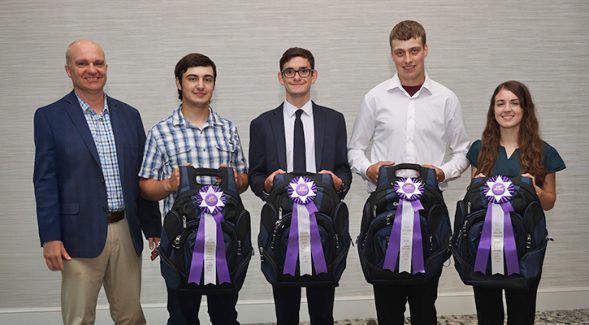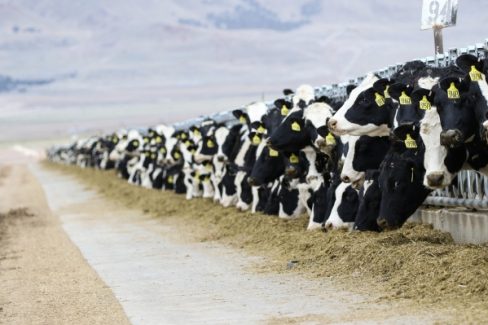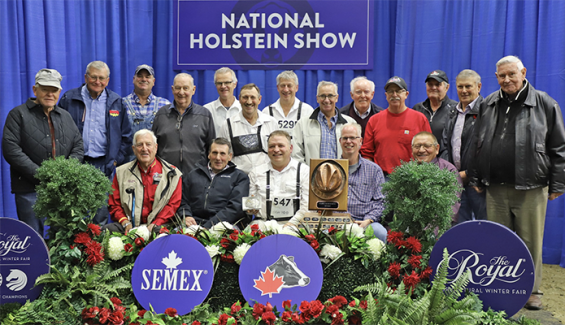For five days each year, Wisconsin becomes the dairy hub of the world, attracting visitors from around the globe who travel to America’s Dairyland eager to learn about the latest products, technology, research and services.
While many of the World Dairy Expo’s 70,000 visitors from 92 countries comb the Alliant Energy Center in Madison chatting up exhibitors and vendors from 29 countries, other international groups fan out across Wisconsin to tour farm operations.
This week a group comprised of agriculture and dairy specialists from the Czech Republic visited four dairy farms in Fond du Lac County — Abel Dairy Farms of Eden and 3-D Dairy, Redtail Ridge Dairy and Lake Breeze Dairy, all of Malone — to gather information about management, nutrition and reproduction practices to maximize profit from each cow back home.
“When we started to sell Holstein genetics in our country many farmers hesitated, wondering if the Holstein breed was a good fit for our domestic conditions,” said Mirek Novotny, owner of MTSSRO, a marketing firm for World Wide Sires in the Czech Republic. “Wisconsin and the Czech Republic are very similar in climate and it was very important to show them that it was possible. Bringing them to the U.S. proved to be a very successful strategy.”
‘Breeding revolution’
Novotny has sponsored tour groups to the U.S. since the 1990s fall of the Communist/Socialist era in eastern Europe. Since then he has brought more than 900 of his countrymen to the U.S. to witness firsthand the practices that have made the dairy industry profitable.
As democracy spread across eastern Europe, farmers soon began implementing practices from producers in North America that doubled their rolling herd averages in 25 years. Earl Kerhmeyer of Fond du Lac, who has worked in international marketing since 1972, said introduction of the Holstein breed was a game changer for Europeans who preferred cows that were bred for both meat and milk production.
“In the 1970s, the Hungarians imported 3,500 Holsteins from the U.S. and Canada which served as the nucleus of their new dairy breed,” Kehrmeyer said. “The Holstein really created kind of a breeding revolution.”
Statistics contained in the Holstein Cattle Breeders Association of the Czech Republic annual report clearly show the gains in milk production that followed replacement of dual purpose animals with Holsteins. In 1992, the country reported that 957,938 cows annually produced an average of 10,233 pounds of milk per cow. Although cattle numbers fell to 350,351 animals, they produced 22,190 pounds per animal.
Novotny said increased milk production has helped Czech Republic farmers survive against strong competition from European countries like Germany and France.
“It’s not easy to place milk on the market, especially when other countries with strong economies won the dairy plants,” Novotny said. “In addition, those very same countries are trying to sell milk products in our own country, so our farmers have had to cooperate together to get a good price.”
Novotony says Czech Republic farmers would also benefit from termination of the milk quota system.
“In our country, farmers are well-prepared and could survive without milk quotas,” Novotny said. “In fact, I think some would enjoy being able to enter the open market because they could milk more cows.”
Novotny said the average herd size in the Czech Republic is 250 cows, compared to about 125 cows in Wisconsin, according to the Wisconsin Department of Agriculture and Consumer Protection.
Kehrmeyer said the Czech Republic used artificial insemination long before it’s American counterparts simply because the old regimen made the practice compulsory. After the fall of the old system, private companies like MTSSRO were responsible for importing semen from top North American studs to improve cow lines and boost production.
Always learning
The study tours hosted by Novotny also serve to build better practices on Czech Republic dairy operations.
“Each year they return home with something new that they’ve learned and put it into practice on their own farm,” Novotny said. “Not only has the introduction of U.S. genetics been important to us, but also the hospitality that they’ve shown us, taking time during the corn harvest to open up their farms to visitors. I believe that if our farmers couldn’t see (the success of these operations and practices) they would not trust that it is possible.”
Abel Dairy Farms owner Steve Abel has no problem setting aside time to share information with visitors.
“Farmers by nature are sort of independent, but we’re good at one thing and that’s sharing our experiences and what we’ve learned,” Abel said. “In the process of building our dairy up, we’ve taken a lot of ideas from other people and I think it’s only fair that we give back in the same manner.”
Kehrmeyer credits Novotny for not only bringing technology back to the Czech Republic which has made rapid progress in improving cattle and milk production, but has conducted worldwide sire seminars featuring Wisconsin residents Gary Boyke of Fond du Lac and Lloyd Holterman of Dodge County.
“I worked in the country for a few years under Socialism/Communism and nothing happened. It was all controlled by people who didn’t have any experience in cattle breeding,” Kehrmeyer said. “But as soon as people in the private sector got involved, it just turned on a revolution and progress began to happen.”
Source: FDLreporter




